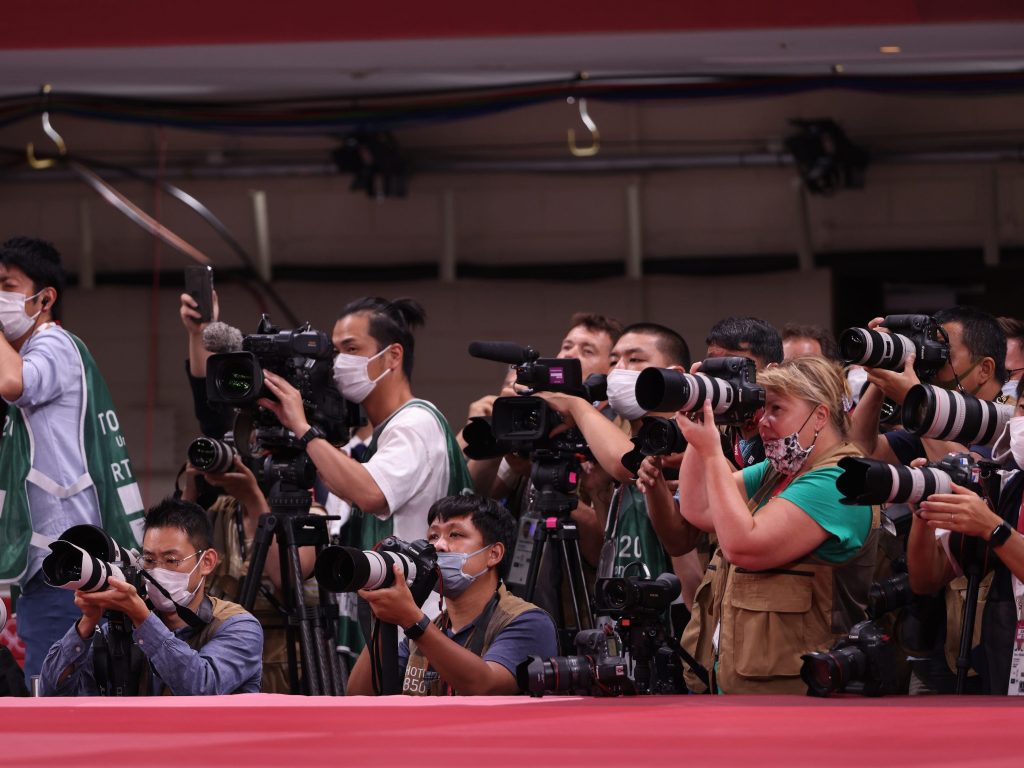
- Athletes at the Tokyo Olympics have adjusted to strange circumstances, but so has attending media.
- One veteran Olympic photographer shared how this year's games are different from previous years.
- Social distancing, extreme weather conditions, and new sports are examples of big differences.
- Visit Insider's homepage for more stories.
Athletes aren't the only people adjusting to the unprecedented conditions at the Tokyo Olympics.
Ryan Pierse, a veteran sports photographer for Getty Images, has attended the last four summer Olympics and last two winter Olympics but admits this year's games have caught him off guard in several respects, and not just for the obvious reasons.
"I had quite a long excursion during a taxi ride," Pierse said. "Obviously, my Japanese isn't very good, and the taxi driver, I don't think his English was that good either. I was trying to translate on Google Translate and kind of work out where we were going, and I think an hour trip turned into two hours. We got there in the end, but it was quite entertaining."
The language barrier of Japan would have been a challenge for the Australian Pierse either way. Beyond that, the Olympics are being played through a state of emergency, and record heat levels haven't made things much easier.
The Tokyo Olympics have been the anti-social Olympics
The COVID-19 pandemic is at a climax in Japan, as new cases are increasing by more than 3,000 per day. The country has been under a state of emergency since April, and it will extend throughout the games.
Pierse had to quarantine for four days before he was even allowed into the country, and then for the next 10 days, he was only allowed to go between his assigned venues and hotel room. Now he's allowed to explore the community a little more freely but still isn't allowed to visit most of Tokyo's public area and businesses.
"We have daily PCR tests too," Pierse said. "Trying to remember to do them every day first thing when you get up just adds to the things you have to think about when you're covering an Olympics."
"It's different when you compare Tokyo to previous Olympics like Rio and London. Those were quite social Olympics. Even though you had really long working days and it was hard work, once you finished, you could wind down and enjoy what the city had to offer in restaurants and bars, go to a cafe in the morning for breakfast," he added.
The new sports are a positive change, but extreme weather conditions are a barrier
Surfing is one of the four new Olympic sports, and for Pierse, a native of Australia, the sport's addition is a treat.
"Surfing is probably the one thing where if I have a day off, and if the waves were happening, I would take my camera down on a day off. It's a rare thing for me, usually, if there's a day off, I'll keep my cameras packed away," Pierse said. "Surfing is one of those things that has been more of a passion than something you shoot for work purposes."
Pierse's passion for the sport has made him Getty Image's designated surfing photographer for this year's Olympics. For four straight days, he made his way up the coast to the Japanese town of Chiba, where all the surfing events are hosted.
But heat levels in Tokyo and the surrounding area have hit record levels. The average temperature is higher than that at any previous Olympics host city.
Pierse admits it is the hottest weather he's ever shot in, and while he's prepared for the heat and endured it so far. But the heat has been compounded by the harshest level of wind Pierse has ever had to deal with as well, and it's made his job slightly more difficult.
"I've basically been sand blown for four days," Pierse said. "It's taken a toll on the face, arms, and legs, and camera gear which I spent two hours doing a pretty deep clean before going back to Tokyo for the next assignment. There was sand in every little dial and button you could imagine."
